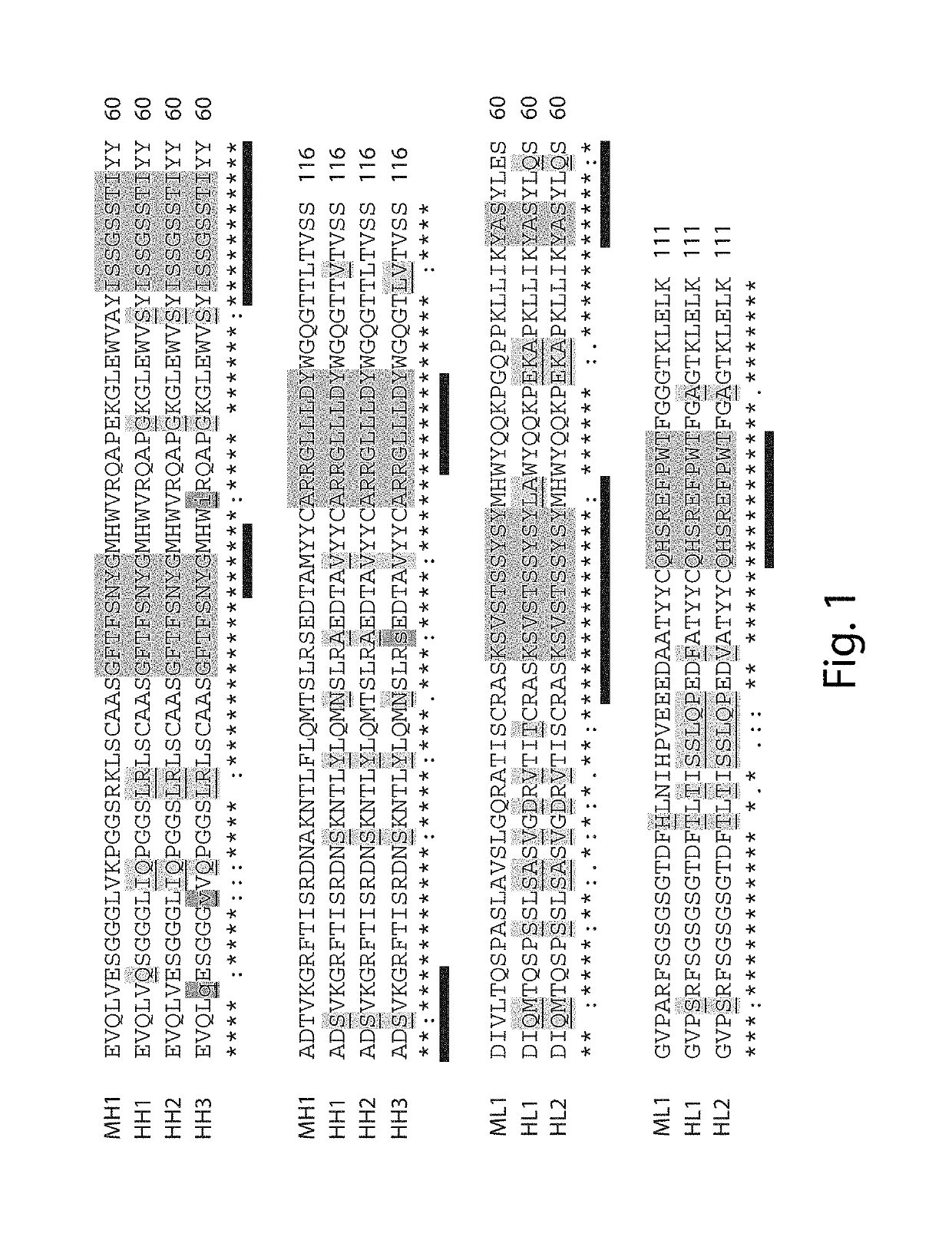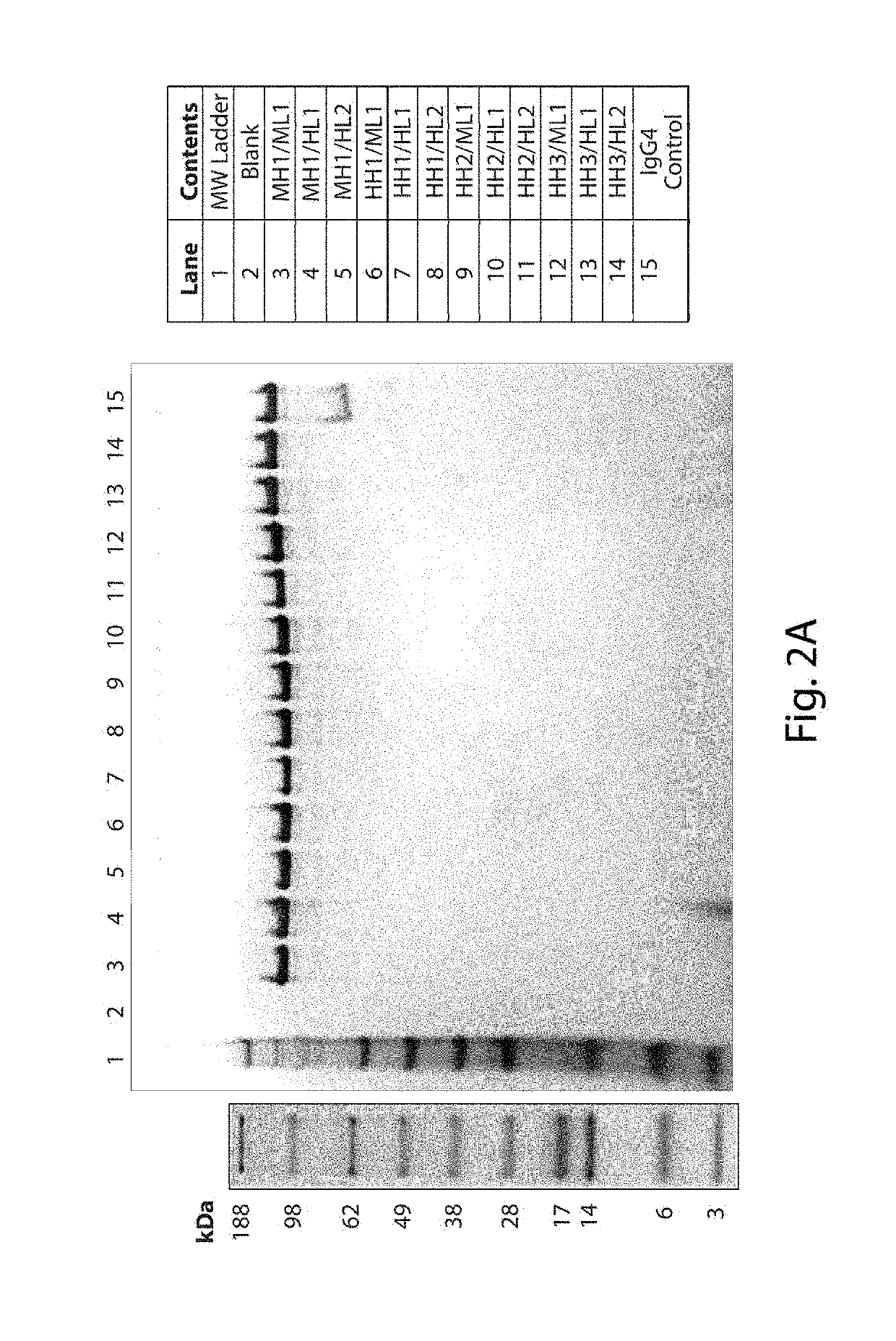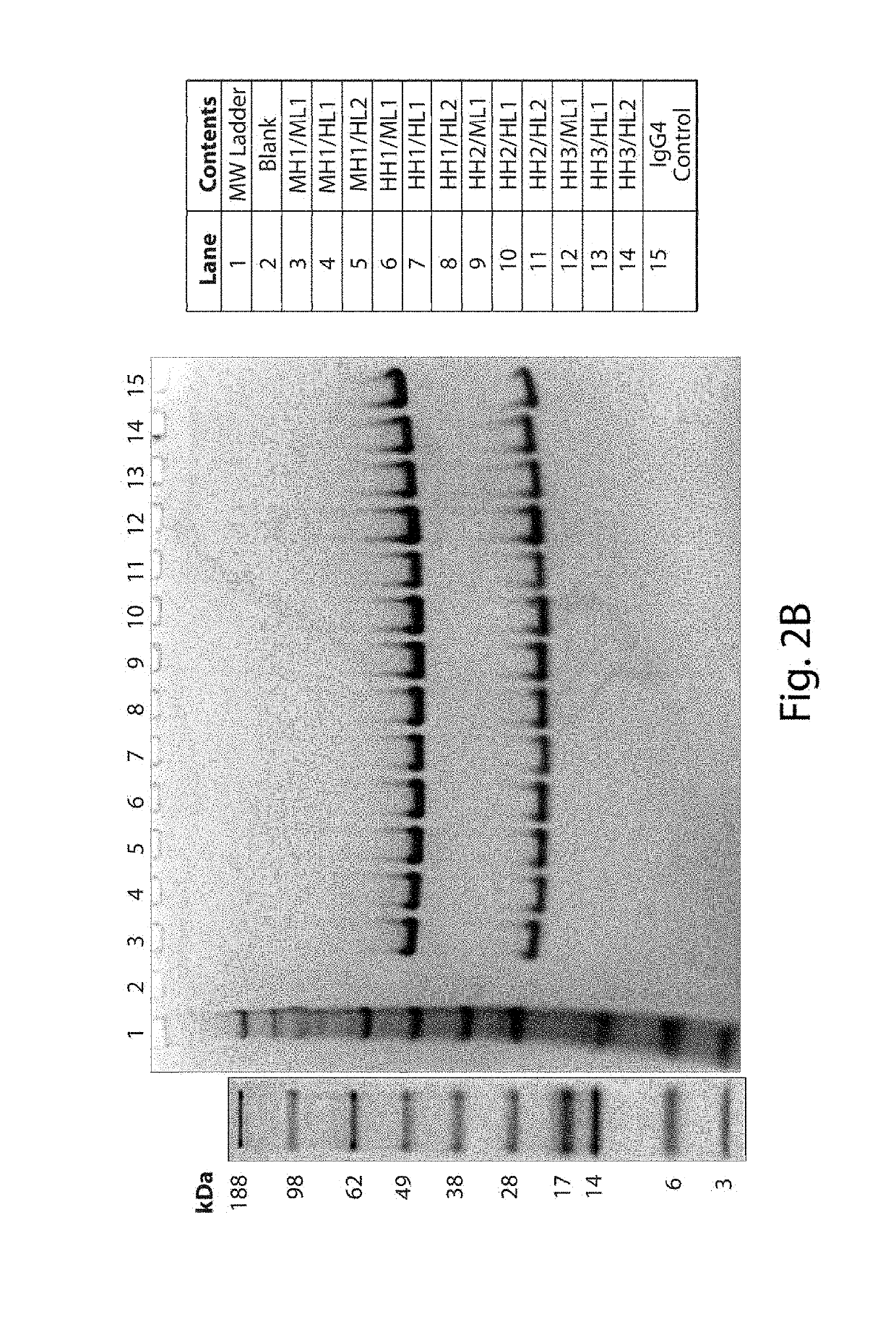Internalizing moieties
a technology of internalizing moieties and antibodies, applied in the field of internalizing moieties, can solve the problems of limiting human applicability, not all humanized or chimeric antibodies retain the properties of their rodent precursors, etc., and achieve increased solubility of antibodies, and superior biological or physiological properties.
- Summary
- Abstract
- Description
- Claims
- Application Information
AI Technical Summary
Benefits of technology
Problems solved by technology
Method used
Image
Examples
example 1
Preparation of First Generation Humanized 3E10 Antibodies
[0455]First generation humanized 3E10 antibodies were generated using a humanized antibody framework selection and design protocol. The parent, murine antibody was a murine 3E10 antibody comprising a light chain variable (VL) domain comprising the amino acid sequence set forth in SEQ ID NO: 7 and a heavy chain variable (VH) domain comprising the amino acid sequence set forth in SEQ ID NO: 9. We note that this heavy chain variable domain is not that of the original 3E10 antibody deposited with the ATCC, but rather, contains a single amino acid substitution (e.g., a D to N in the VH). However, this variant VH was previously generated and has been shown to retain cell penetrating and DNA binding activity. A murine antibody comprising the foregoing VL and VH was used as the parent, murine 3E10 antibody.
[0456]The nucleotide sequence encoding the murine antibody VL amino acid sequence (SEQ ID NO: 53) was subjected to a BLAST databas...
example 2
Generation of Second Generation Antibodies
[0461]Due to the difficulties in purifying the antigen binding fragments described in Example 1, and in order to develop superior humanized antibodies, we sought to develop an alternative humanized antibody. When designing the second generation humanized light and heavy chain variable domains, once again the murine 3E10 variable domains described in Example 1 were used as the parent VH and VL. For this approach, while the CDRs in accordance with the IMGT scheme were held constant, such that potential FR changes were evaluated relative to the IMGT scheme, (LeFranc et al., 2003, Development and Comparative Immunology, 27: 55-77), several substitutions were introduced in the CDRs in accordance with the Kabat scheme. Using this approach, the second generation humanized light and heavy chain variable domains produced have a number of sequence differences as compared to the first generation humanized antibody and the murine, parent antibody. The C...
example 3
QCM Binding Assay
[0469]Murine 3E10, including the specific 3E10 comprising the VL set forth in SEQ ID NO: 7 and the VH set forth in SEQ ID NO: 9, is known for its ability to bind DNA (e.g., DNA is an antigen / epitope (e.g., target) recognized by 3E10). Thus, binding properties for each of the different antibodies generated in Example 2 versus DNA were assessed using QCM. The DNA substrate used was a short blunt DNA where one strand consisted of the nucleotide sequence set forth in SEQ ID NO: 63. All of the antibodies set forth in Example 2 as having any combination of one or more humanized VH and / or VL domains were tested and had DNA binding activity. As a negative control, an antibody comprising the murine, parent heavy and light chain variable domains but having a R92N mutation in the VL (a mutation known to disrupt DNA binding activity) was generated and used.
[0470]In addition, a previously generated sample of a MH1 / ML1 antibody on a human Fc backbone (3E10 HuIgG1) was utilized in...
PUM
 Login to View More
Login to View More Abstract
Description
Claims
Application Information
 Login to View More
Login to View More - R&D
- Intellectual Property
- Life Sciences
- Materials
- Tech Scout
- Unparalleled Data Quality
- Higher Quality Content
- 60% Fewer Hallucinations
Browse by: Latest US Patents, China's latest patents, Technical Efficacy Thesaurus, Application Domain, Technology Topic, Popular Technical Reports.
© 2025 PatSnap. All rights reserved.Legal|Privacy policy|Modern Slavery Act Transparency Statement|Sitemap|About US| Contact US: help@patsnap.com



